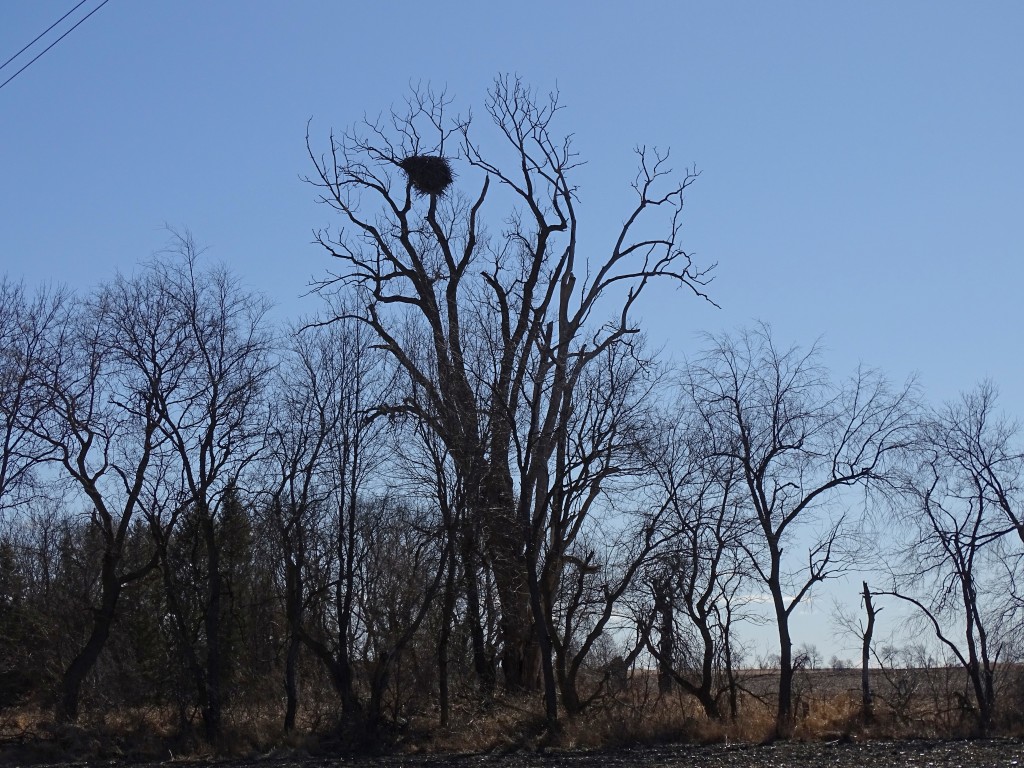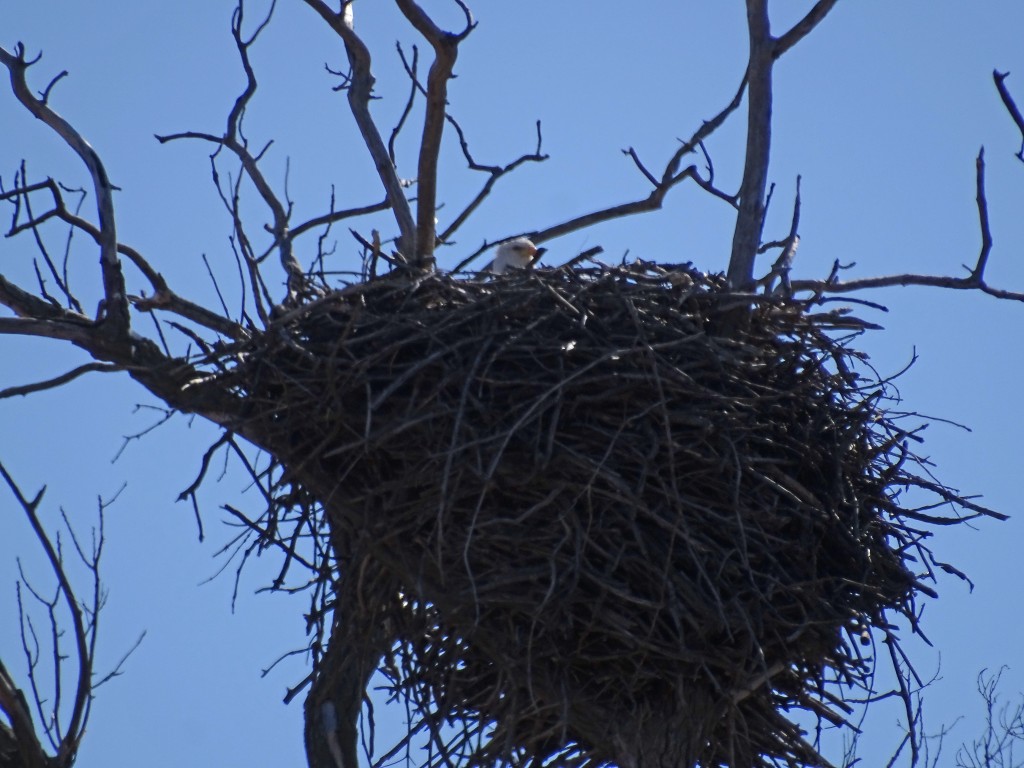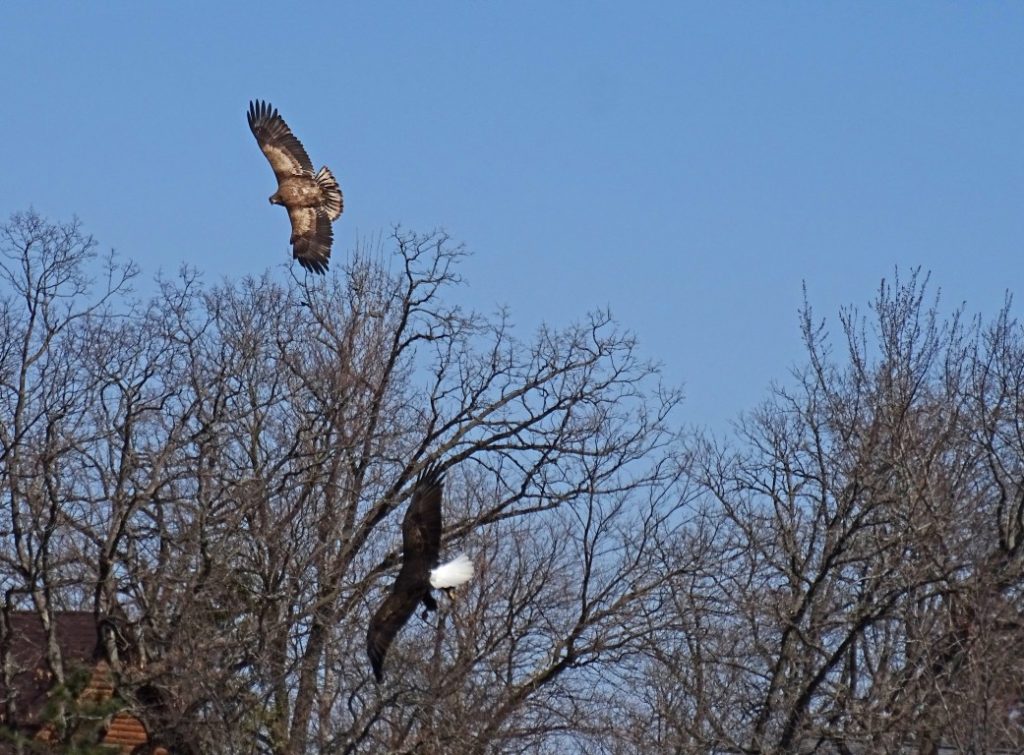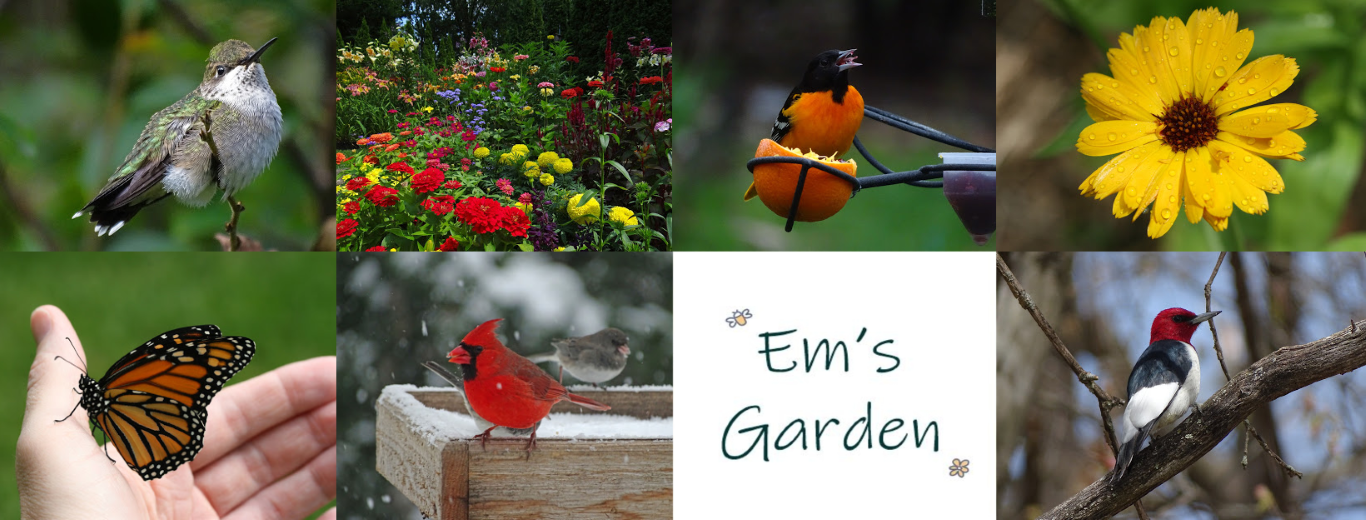Bald Eagles are an endangered species success story. There were an estimated 500 nesting pairs in the 1960s in the United States. But by 2024 that number had jumped to more than 71,000 nesting pairs!
I see Bald Eagles all the time now—sometimes soaring over my neighborhood. And I even know where one occupied nest is inside our city limits. It’s right next to a very busy highway.
When you’re out and about, look for a GIANT nest in a tall tree. Eagle nests can weigh more than a ton. It’s amazing trees can even support that much weight. The nests are usually about 5 to 6 feet in diameter and 2 to 4 feet tall. They can take months to build.
After all that work, it makes sense that an eagle pair may reuse that nest the following year.
Jill and I found this Bald Eagle nest while looking for migrating ducks two weeks ago. We passed it again on Saturday.

This time we pulled the car over to get a better look.
I had to extend the optical zoom on my camera all the way, but I did see a little white head sticking out of the top. Imagine hauling and putting all those sticks in place without hands!

In Wisconsin, Bald Eagles usually start nesting and laying eggs in February and March. The female lays 1 to 3 eggs that hatch in about 35 days.

You can find live cams of nesting Bald Eagles all over the internet and watch eagles progress from hatchlings to young adults.
Later on Saturday when Jill and I were looking for migrating loons, three Bald Eagles soared above our heads. Suddenly an adult swooped down in front of us and we thought it was dive-bombing a hawk. But when we checked our photos later we discovered the brown bird was a juvenile Bald Eagle.

To spot a Bald Eagle, look for a bird with a very large wingspan circling high in the sky. If it’s a sunny day, the white head and tail are often visible when they turn—even without binoculars.
According to the Cornell Lab of Ornithology, “Bald Eagles can live a long time. The oldest recorded bird in the wild was at least 38 years old when it was hit and killed by a car in New York in 2015. It had been banded in the same state in 1977.”
